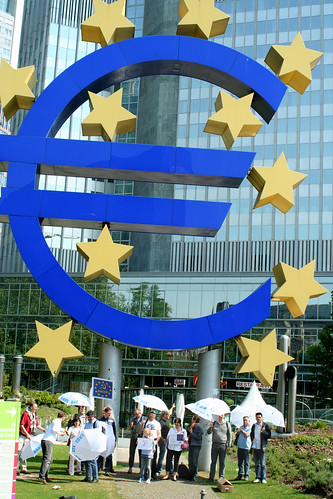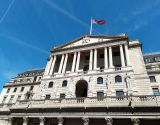
The euro rebounded in Asia trade on Wednesday on hopes for fresh European Central Bank easing policies after officials downgraded their eurozone growth forecasts for next year.
The pick-up follows days of selling pressure for the unit, which began falling last week after data showed inflation at a four-year low.
After suffering early selling pressure the single currency climbed to $1.3501 and 133.04 yen in Tokyo afternoon trade, up from $1.3474 and 132.76 yen in New York Tuesday. The currency is well down from the $1.3787 and 134.40 yen before last week's inflation data.
The dollar was at 98.54 yen, from 98.53 yen in New York where it had won support from better-than-expected US services sector data.
On Tuesday, European officials said the eurozone economy would grow 1.1 percent next year, slower than the 1.2 percent it forecast in May. They also kept their estimate of a 0.4 percent contraction this year.
The figures -- along with data showing inflation surprisingly fell to just 0.7 percent -- dented hopes about a strong recovery in the debt-wracked bloc but fuelled speculation the ECB would cut already record-low interest rates at its policy meeting Thursday. Lower interest rates tend to weigh on currencies.
"Since the ECB looks uncomfortable with a recent rally in the euro above $1.38, the ECB President Mario Draghi is unlikely to say something that can be taken as denying the odds of a future rate cut," Marito Ueda, managing director at FX Prime Corp., told Dow Jones Newswires.
The dollar advanced in late Asian trade Wednesday after reports on Toyota's upgrading outlook for the annual operating profit boosted the stock prices and encouraged buying of the US unit.
Dollar trading was focused on upbeat US services sector figures on Tuesday, which pointed to a pickup in the world's biggest economy.
The ISM purchasing managers index for the service sector rose to 55.4 percent in October -- up from a September reading of 54.4 percent and much higher than the expected 54.0 percent. A figure above 50 points to growth while anything below indicates contraction.
The figures, which come ahead of third-quarter US economic growth and October jobs data, added to expectations the Federal Reserve will start winding down its monetary easing plan sooner rather than later.
The central bank has said any pullback on the scheme -- which would tend to boost the dollar -- hinged on a firm US economic recovery.
The dollar was mixed against other Asia-Pacific currencies.
It rose to Sg$1.2432 from Sg$1.2424 in Tokyo the previous day, to Tw$29.41 from Tw$29.40, to 11,409 Indonesian rupiah from 11,356 rupiah, and to 61.92 Indian rupees from 61.84 Indian rupees.
The greenback slipped to 1,060.90 South Korean won from 1,062.07 won, to 43.25 Philippine pesos from 43.29 pesos, and to 31.28 Thai baht from 31.31 baht.
The Australian dollar fetched 95.19 US cents compared with 94.71 cents, while the Chinese yuan rose to 16.18 yen from 16.15 yen.
afp, photo by Partei der Vernunft







































